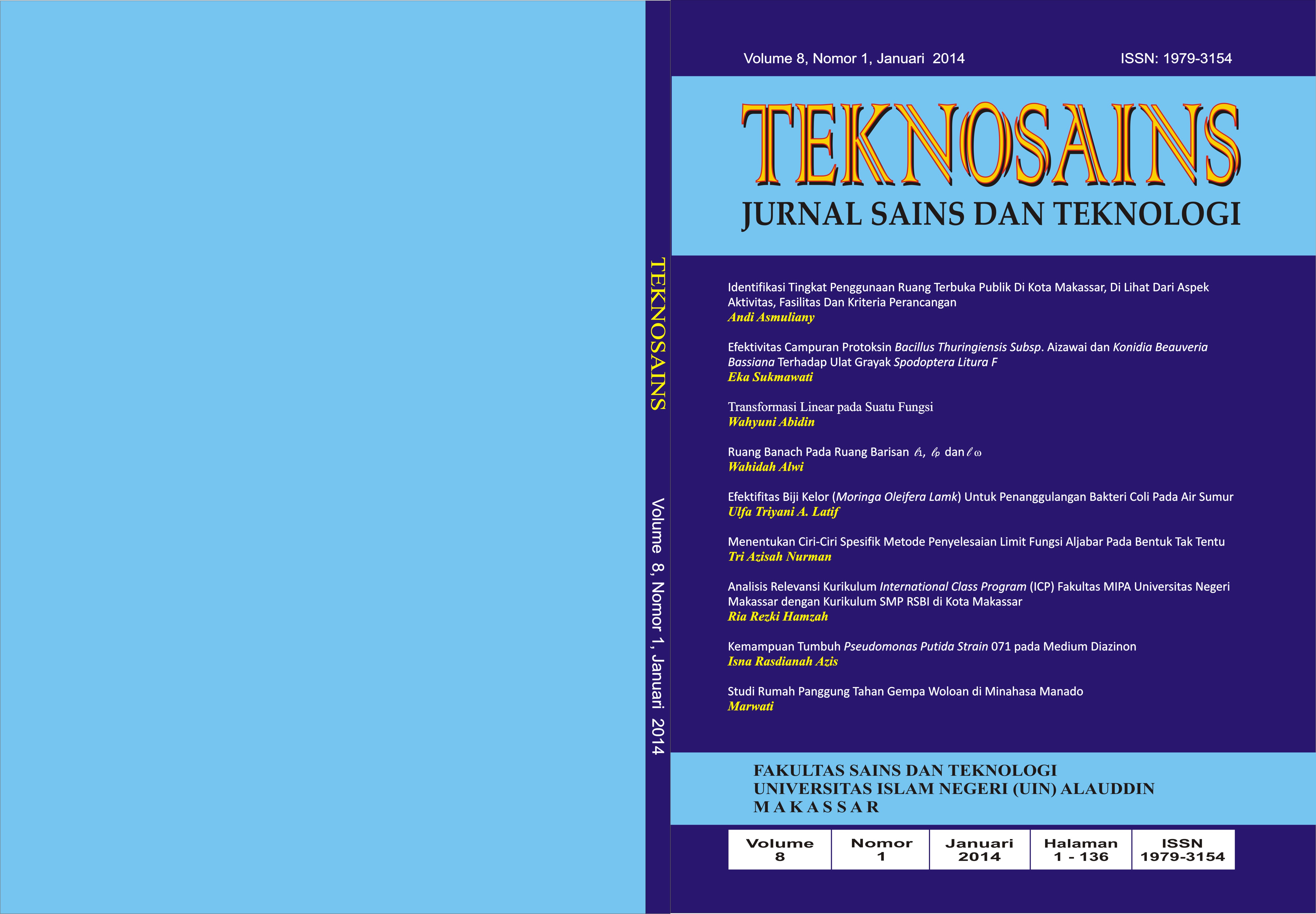EFEKTIVITAS CAMPURAN PROTOKSIN BACILLUS THURINGIENSIS SUBSP. AIZAWAI DAN KONIDIA BEAUVERIA BASSIANA TERHADAP ULAT GRAYAK SPODOPTERA LITURA F.
Abstract
Armyworm or (Lepidoptera:Noctuidae) is one of main pest in plant crop. This pest might cause damage on the leaves and stems and reduce of crop production. Bacillus thuringiensis subsp. aizawai and Beauveria bassiana have been known as biocontrol agent to this pest. This research was aimed to observe the production time of B. thuringiensis subsp. aizawai toxin, measure the effect of toxin against Be. bassianaconidia, to test the activity of their mixture against S. litura. B. thuringiensis subsp. aizawai was grown on specific medium for B. thuringiensis. Toxin production of the isolate was measured every 4 hours up to 48 hours incubation. Be. bassianawas grown on the white rice medium and its conidia was grown on the Potato Dextrose Agar medium. containing toxin. The activity test was done by spraying them to S. litura larvae. The stasionary phase of B. thuringiensis was obtained at 16 hours incubation and the maximal toxin production at 48 hours.. The highest mortality caused the mixture of toxin thuringiensis and conidia Be. bassiana was 96,7%.References
Atlas RM, Parks LC, editor. 1997. Handbook of microbiological media. Ed ke-2.Florida: Crc press.
Bobrowski VL, Pasquali G, Bodanese-Zanettini MH, Pinto LM, Fiuza LM. 2002. Characterization of two Bacillus thuringiensis isolate from South Braziland their toxicity against Anticarsia gemmitalis (Lepidoptera: Noctuidae).Biol Control 25:129-135.
Boncheva R, Dukiandjiev S, Minkov I, Ruud A. Naimov S. 2006. Activity ofBacillus thuringiensis δ-endotoxin againt codling moth (Cydis pomonellaL) larvae.J Invert Pathol 92:84-87.
Bradford MM. 1976.A rapid and sensitive method for the quantification ofmicrogram quantities of protein utilizing the principle of protein dyebinding.Anal Biochem 72: 248–254.
Dhuyo AR, Naheed MS. 2008. Pathonegenity of beauveria bassiana (Deuteromycota: Hypomycetes) against the yellow rice stem borer, Sciicpophaga incertulas (Lepidoptera: Pyrilidae) under laboratorycondition. Pakist Entomol 30:37-42.
Hennie J, Puspita F, Hendra. 2003. Kerentanan larva Spodoptera litura terhadap virus nuclear polyhedrosis. J Natur Indones 15:145-151.
Hill DS. 1993. Agricultural insect pests of the tropics and their control. :Cambridge : Cambridge University Press.
Lewis LC. Berry EC. Obrycki JJ. Bing LA. 1996. Aptness of insecticides (Bacillus thuringiensis and carbofuran) with endophytic Beauveria bassianain suppressing larval populations of European corn borer. Agric EcosystEnviron 57: 27–34.
Lopez MJ, Ibarra JE.1996. Characterization of novel strain of Bacillusthuringiensis.Appl Environ Microbiol 62:1306-1310.
Ma X , Liu X, Ning X, Zhang B, Han F, Xiu M, Tang YF. 2008. Effect ofBacillus thuringiensis toxin Cry1Ac and Beauveria bassiana on Asiaticcorn borrer (Lepidoptera: Crambidae). J Invert Pathol 9:123-128.
Marwoto, Suharsono. 2008. Strategi dan komponen teknologi pengendalian ulatgrayak (Spodoptera litura fabricus) pada tanaman kedelai. J Lit Pertan27:131-136.
Navon A. 2003. Bacillus thuringiensis insecticides in crop protection – reality andprospect.Crop Protect 19:669-676.
Rao GVR, Wightman JA, Ranga Rao DV. 1993. World review of the naturalenemies and diseases of Spodoptera litura (F.) (Lepidoptera: Noctuidae).
Schenepf E et al. 1998. Bacillus thuringiensis and its pesticidal cristal protein.Microbiol Mol Biol 62: 705-806.
Soetopo D, Indrayani I. 2007. Status teknologi dan prospek Beauveria bassianauntuk pengendalian serangga hama tanaman perkebunan yang ramahlingkungan. Perpesktif 6:29-46.
Tanada Y, Kaya HK. 1993. Insect Pathology. San Diego:Academic Press.Wang Q, Xu L. 2012. Beauvericin , a bioactive compound produced by fungy.Molecule 17:2367-2377.
Yussof WM, Mazmira MM, Mei CC. 2003. Effect of ammonium sulphate on thesporulation of Bacillus thuringiensis sbsp.aizawaiSN2 (a local isolate)during batch fermentation. J Teknol 39:53-60.
Zouari N, Dhouib A, Allouz R, Jaoua S. 1990. Nutritional requirements of a strainof Bacillus thuringiensis subsp. kurstaki and use of gruel hydrolysate forthe formulation of a new medium for δ-endotoxin production. ApplBiochem Biotech 69: 41-52.
This license allows authors to copy, redistribute, remix, transform, and build upon the Work, in any format or medium, for any purpose including commercial purpose, on a perpetual basis provided they credit the Work and the authors. Authors
must explain any changes that were made from the original and may not suggest the authors endorse the use. The resultant work must be made available under the same terms, and must include a link to the CC BY 4.0 International License.


 This work is licensed under a
This work is licensed under a 